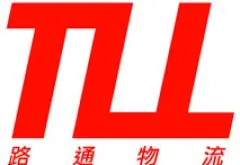According CSMS # 54456976,
In response to the United States Court of International Trade order (Slip Op. 22-130) and in cooperation with the National Marine Fisheries Service (NMFS), the U.S. Customs and Border Protection (CBP) has imposed import restrictions on fish and fish products from the New Zealand inshore set net and trawl fisheries deployed in the range of the Maui dolphin, a marine mammal species endemic to the west coast of the North Island.
This action prohibits the importation into the United States from New Zealand all snapper, tarakihi, spotted dogfish, trevally, warehou, hoki, barracouta, mullet, and gurnard fish and fish products harvested by set nets and trawls in the inshore fisheries of the west coast of New Zealand’s North Island within the Maui dolphin’s geographic range. To effectuate the court order, snapper, tarakihi, spotted dogfish, trevally, warehou, hoki, barracouta, mullet, and gurnard fish and fish products imported into the United States under the HTS codes listed on the NMFS website indicated below, caught with a set net or trawl within the Maui dolphin range, are prohibited from entry into the United States unless accompanied by Certification of Admissibility that the fish or fish products are not of the designated species, were derived from fisheries using other gear, or derived from fisheries operated in other areas.
NMFS has worked with Government of New Zealand to establish Certification of Admissibility procedures and additional details on documenting inbound shipments have been published on the NMFS website listed below. Either the NMFS-issued Certification of Admissibility form (OMB Control # 0648-0651) or the New Zealand-issued form US350 Certification of Admissibility may be used to validate that the inbound shipment/consignment is not subject to
the court-ordered trade restriction. Similar to the NMFS COA form, the NZ US350 form must be uploaded via the ACE Document Image System using code NMF23 at the time of entry or submitted directly to the CBP port of entry via email, fax or paper. NMFS does not require that all data fields are completed on the New Zealand issued US350 form, provided there is sufficient information to determine that the consignment contains fish that are not subject to the embargo. For example, if the fish species in the consignment as identified on the New Zealand form US350 is not within the scope of the embargo, other data fields (e.g., fishing gear, vessel names) may indicate “not applicable”.
NMFS advises that U.S. importers consult with New Zealand exporters regarding the species in the consignment, the appropriate HTS code for U.S. entry filing, and the version of the form (U.S. or New Zealand) to be used to certify admissibility in response to the court order.
For the purposes of enforcing the court-ordered ban, the west coast of North Island inshore set net and trawl fisheries are designated as vessels less than or equal to 46 meters length overall that are authorized for fishing by the government of New Zealand and that operate in Fishery Management Area 8 and Fishery Management Area 9. See this web link for information on New Zealand’s delineation of fishery management areas: https://niwa.co.nz/media-gallery/detail/109673/42525
T-Link Logistics Inc is a full service of Customs brokerage house; Please fell free to contact us chb@tlinklogistics.com
